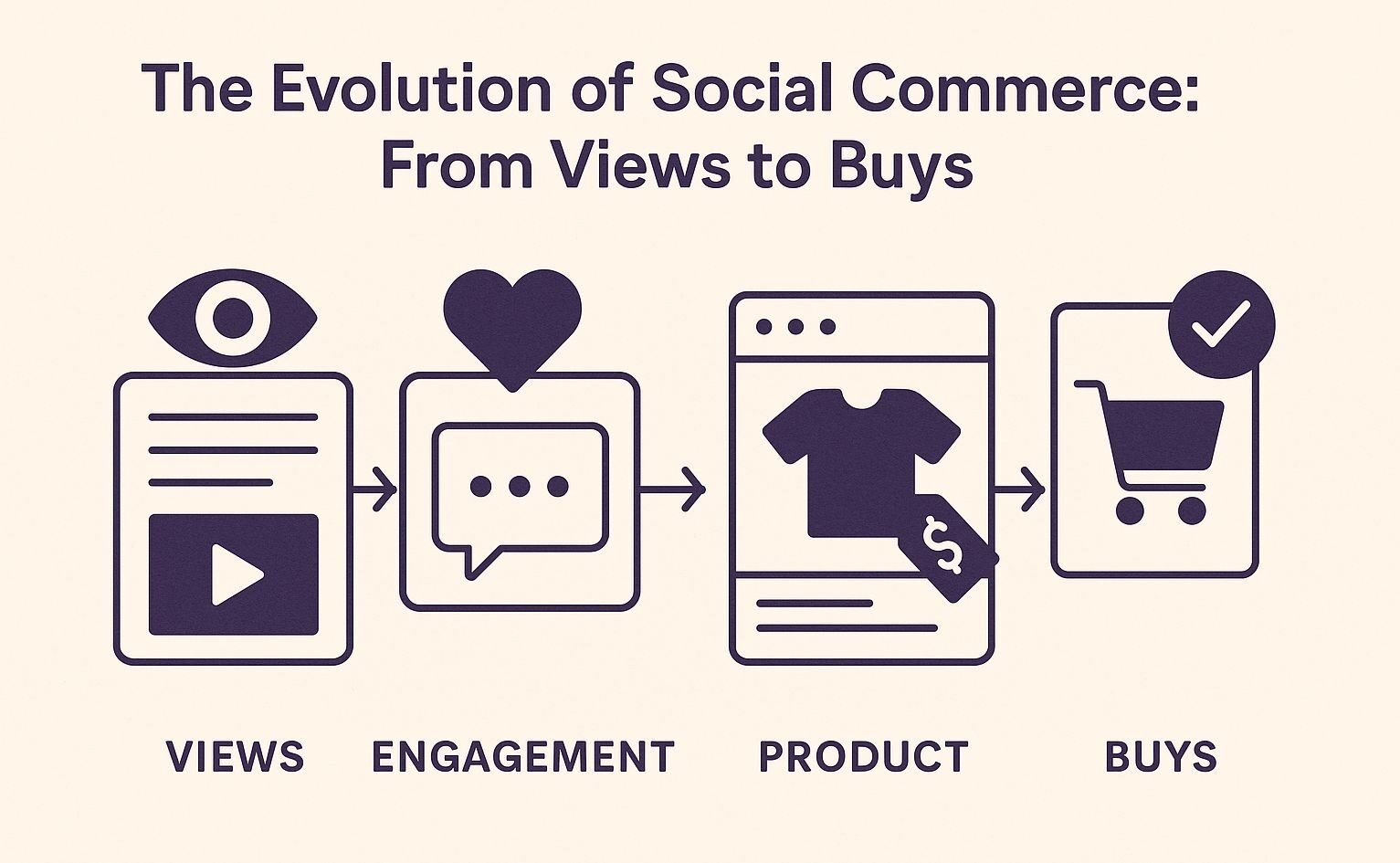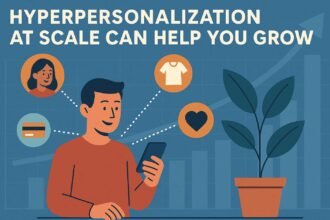Brands have always been able to use social media to their advantage. At first, it was about getting people to know about it and get involved. The game has changed today. We are now in the age of social commerce, where the line between scrolling and shopping is almost gone.
It’s not enough to just put a link to your store in your bio and hope people click on it. Customers now expect to be able to find, compare, and buy things all in one app. That change is changing the way people shop and the way businesses grow.
What is Social Commerce, Anyway?
The main idea behind social commerce is to use social media sites as direct sales channels. Social commerce is different from traditional social media marketing because it keeps the whole shopping experience inside the app instead of sending people to a separate website.
This is how it works in real life:
- Posts that you can buy → You can buy a tagged item right away by tapping on it in a picture or video.
- Checkout in the app → Users can buy things on Facebook and Instagram without leaving the site.
- Live Shopping → Brands show off their products on live streams, answer questions in real time, and offer flash deals.
- DM-Based Sales → Businesses send catalogs, answer questions, and take orders directly through WhatsApp, Messenger, or Instagram DMs.
You can walk through a digital mall without ever leaving your favorite social app.
Why is Social Commerce Growing So Quickly?
Several important factors are causing this change:
- No Friction
People who shop want things to be easy. Shopping feels natural, not forced, when you can buy things with just a few taps and not have to open a new browser tab. - Trust and honesty
Friends’, family’s, or influencers’ suggestions are more important than traditional ads. That credibility is what social commerce builds on. - The Strength of Pictures
Visuals are what make platforms like TikTok, Instagram, and Pinterest work. A picture of a product on an e-commerce site is not as convincing as seeing it in use. - Personalized Discovery
Personalized discovery algorithms know what users want. That means people often find things they didn’t know they wanted until they see them.
How to Make a Successful Social Commerce Plan
Tagging products alone won’t get you anywhere. It comes from making experiences that get people to connect and buy.
Things to think about:
- Pick the Right Platforms
Go to places where your audience already hangs out. For instance:- Home decor → Instagram and Pinterest
- Fashion → Instagram and TikTok
- Technology for consumers → YouTube and Facebook
- Put Money into Good Content
It’s important to have clear pictures, real videos, and stories that are based on real life. Think of your feed as the front of your store. - Use User-Generated Content (UGC)
Ask customers to tell you about their experiences. Sharing their content again builds trust and community. - Work with People Who Have a Lot of Followers
Find creators who really connect with your audience and work with them. Their suggestions don’t feel pushy; they feel personal. - Put on Live Shopping Events
Show how products work, answer questions, and give special deals. This makes people feel like they need to act quickly and get involved right away. - Make it Easier: Check Out
Make sure that buying is easy and safe on all devices by testing them. A small amount of friction can end a sale.
A Quick Look at Traditional E-Commerce vs Social Commerce
| Part | Old-Fashioned E-Commerce | Commerce on Social Media |
|---|---|---|
| Where to Shop | On a Different Website or App | On social media sites |
| Journey of the Customer | Awareness → Click → Website → Purchase | Awareness → Explore → Buy (in-app only) |
| Trust Source | Brand’s ads and product pages | People who have a lot of followers, friends, and UGC |
| Experience | Focused on transactions | Community- and content-driven |
Last Thoughts
Social commerce isn’t just another way to sell things; it’s a whole new way to shop. It combines finding out about things, having fun, trusting, and buying into one smooth experience.
This is more than just a trend for brands. It’s a change that:
- Shortens the sales funnel, which means turning ideas into purchases right away.
- Builds communities, not just customer lists, which makes people more loyal.
- Gathers useful first-party data without invading users’ privacy.
Brands that get on board with this now will stay relevant and make money in the digital future.
In short, meet customers where they are, make shopping easy, and turn scrolling into sales.












